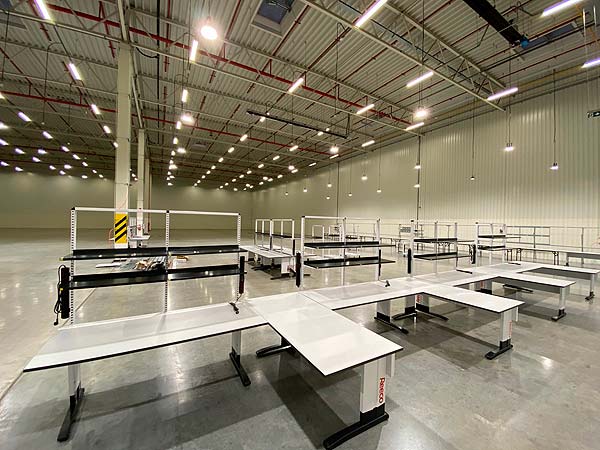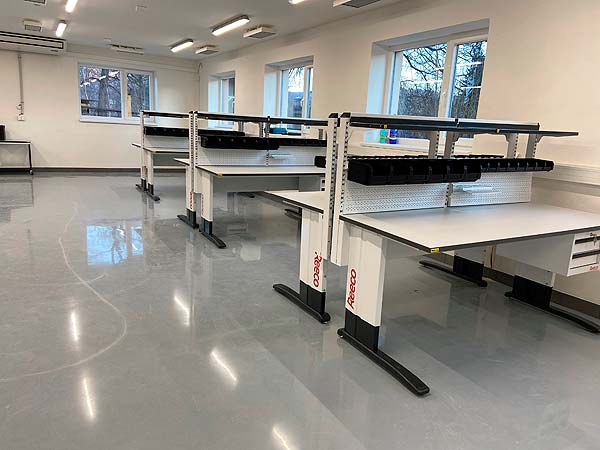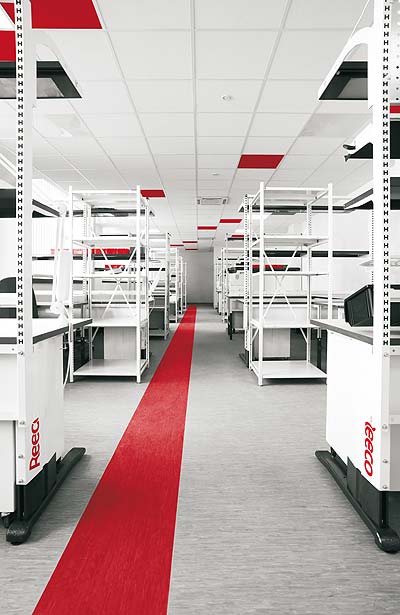 The organization of workstations in order to increase operator comfort is a goal of every entrepreneur. This applies not only to the work area itself, but also to the work culture. But how does the organisation of workstations promote the well-being of the employee and thus contribute to better productivity, reduction of mistakes and sick leaves?
The organization of workstations in order to increase operator comfort is a goal of every entrepreneur. This applies not only to the work area itself, but also to the work culture. But how does the organisation of workstations promote the well-being of the employee and thus contribute to better productivity, reduction of mistakes and sick leaves?
The importance of a perfectly prepared workstation does not have to be persuaded by any company owner, manager of production, maintenance or customer service department. The base is, of course, high-class tools properly adapted to the specification of the work performed, protective clothing, but also the workstation itself (here with emphasis on equipment in the form of industrial furniture – chairs, assembly tables, desks, cabinets, shelves). More and more companies from various industries in our country, realize that even the best equipment and tools are nothing, without a healthy and well-feeling employee at their workplace. The employee, who due to the inadequately equipped workplace, may stay on sick leave even more than ten days a year.
Any condition caused by an abnormal position during the performance of professional duties affects their health and may lead to longer absences in subsequent years of work. The problem of sickness absenteeism is mainly noticed in production workers, who on average stay on sick leave for about 4 days longer than trade or service workers. As the analysis of the number of days of sickness absenteeism in the first half of 2015 showed, due to the illness of the persons insured with the Social Insurance Institution (ZUS), the reason on the third place of the list, causing sickness absenteeism is diseases of the skeletal-articular system, muscular and connective tissue.
Downtime, the continuous organisation of replacements, staff turnover and, finally, the lack of cost control in terms of personnel, results in analysis of the profitability threshold for production showing visible losses.
 THE SCANDINAVIAN COUNTRIES AND GERMANY SERVE AS A MODEL
THE SCANDINAVIAN COUNTRIES AND GERMANY SERVE AS A MODEL
An indisposed worker in a production environment is one of the key health problems that the European Commission has decided to address.
As part of its efforts, it is developing special recommendations aimed at helping employers to keep the absence of their employees caused by MSDs to a minimum.
Interestingly, the development of procedures is based on the experience of our western neighbours. Already in 2007, the German government took an interest in the problem of the impact of non-ergonomic workstations, which are the direct cause of the increased absence of employees on sick leave, and enacted restrictive regulations on the equipment of ergonomic workstations. Already after the first few years of their implementation, they brought measurable positive effects.
The IFA Report has attempted to calculate the losses to the economy due to the absence of employees who do not fulfil their duties due to health problems and occupational diseases acquired as a result of their work. In Germany, as many as 112 million days of work have been lost in manufacturing due to musculoskeletal disorders resulting from inadequate preparation of the workplace and its poor ergonomics.
It is estimated that as many as 16% of all early retirees in Germany are unable to work precisely because of musculoskeletal disorders that prevent them from working and often also cause partial motor disability.
On average, as many as 13 days a year a fitter working in inappropriate conditions spends on sick leave due to a musculoskeletal disorder.
The problem is serious, and underestimating it leads to many problems in the proper functioning of the enterprise. Frequent stay of employees on sick leave is not only a possible delay in the implementation of current projects, but also an additional cost resulting from the need to hire a substitute, payments for work beyond the working hours of other employees, as well as problems related to finding a substitute for an absent employee. To a large extent all these difficulties can be easily avoided.
Musculoskeletal diseases and disorders are one of the most common health problems among production workers. They are also among the most common occupational diseases, resulting from the nature of the work performed. The conditions in which an employee performs occupational activities play an extremely important role in minimising the risk of permanent damage to his/her health. The causes of the disease are primarily due to improper strain on the musculoskeletal system. These include one-sided and monotonous movement while performing occupational activities, or low-movement activities such as working at a desk in a sitting or standing position, leaning for a long time or other unnatural posture that increases muscle tension and strain.
RECOMMENDATIONS
In Germany and all Scandinavian countries there are relevant regulations governing how the workplace is equipped. The standards developed ensure that employees are provided with appropriate conditions, which are the responsibility of the employer. An employee who is hired to work under production conditions must be provided with a workplace that is technically compatible with the developed standards and in planning of which great emphasis is placed on ergonomics. Such a position must be equipped with an appropriate chair and an industrial table as a working area.
The table must be electrically adjustable in height, providing the worker with a comfortable sitting and standing position in which, their posture is natural and not forced by the height of the worktop. The controller should be accessible and installed on the front side of the worktop. In addition, the employee should be provided with a suitable chair that is also adjustable in height.
The set is completed by a footrest (all height parameters are specified by law). Renex offers industrial furniture that meets all the extremely restrictive requirements, designed for companies involved in the manufacture, assembly and maintenance of electrical equipment. In the case of the German and Scandinavian markets described above, the regulations in force are met by the Reeco Industrial Table Premium Series.
 Antistatic modular tables are also available, with the possibility of further expansion, which ensure maximum ergonomics while maintaining high quality workmanship and an affordable price. The extremely robust materials of the Reeco tables allow a load capacity of up to 600 kilograms, with full adjustment by means of electrically controlled lifters.
Antistatic modular tables are also available, with the possibility of further expansion, which ensure maximum ergonomics while maintaining high quality workmanship and an affordable price. The extremely robust materials of the Reeco tables allow a load capacity of up to 600 kilograms, with full adjustment by means of electrically controlled lifters.
The range of heights offered by Recco tables is fully in line with the specification of workplace ergonomics required for industrial furniture in countries that already comply with the restrictive rules of ergonomic workplace standards. The height of the tabletop can be infinitely adjusted between 670 and 1120 millimetres by means of a controller installed at the front of the table.
Such a table allows not only to provide the employee with maximum comfort in the working space, but also to adjust the height of the table top to the posture during the work and its frequent change (it is recommended to change position 2-4 times each hour of work!) by means of an easily accessible controller. Reeco Premium tables are designed to work in EPA conditions.
Thanks to the modular design, they allow the workstation to be extended with additional elements at any time, thus enabling the workstation to be equipped with dedicated lighting, shelves for instruments, tools, trays and other elements needed for work.
In addition to a workplace that is properly prepared in terms of ergonomics, it is the responsibility of the employer to promote a healthy lifestyle and work hygiene among its employees. Equally important as a properly prepared position for an employee is to comply with the standards related to the obligatory breaks, as well as to provide space and working conditions throughout the company, allowing for comfortable performance of tasks.
Contact:
Andrei Bratanov – National Sales Manager
Strada Văliug, nr. 32, Sector 1
13986 București, ROMÂNIA
T: +40 799 774 330
E: Andrei.Bratanov@renex.ro



